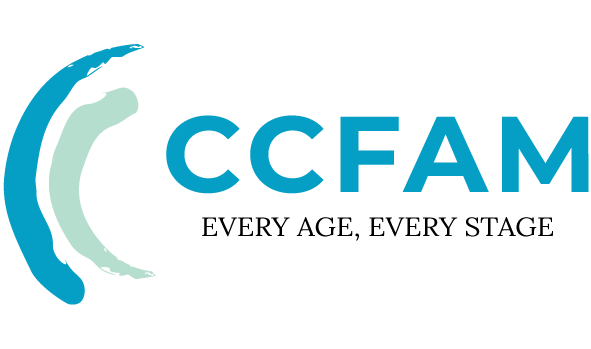23 May Play Therapy vs. Traditional Counseling for Children
When addressing developmental mental health concerns in pediatric populations, caregivers often weigh child-centered play therapy (CCPT) against counseling approaches such as cognitive-behavioral therapy (CBT). Unlike adult-focused modalities, evidence-based interventions for children are grounded in neurodevelopmental frameworks tailored to a child’s cognitive and emotional capacity. This analysis contrasts CCPT with CBT for children and aims to help parents make DSM-5–informed treatment decisions.
How does play therapy for children differ from talk therapy?
Play therapy follows Axline’s eight core principles and relies on symbolic communication—through toys, art, sandtray work, and role play—rather than prolonged verbal dialogue. The Association for Play Therapy (APT) and other experts describe this non-directive approach as one that engages right-hemisphere processing in many young children (roughly ages 3–12), making it particularly effective for preverbal trauma, attachment-related difficulties, and developmental concerns.
Certified Registered Play Therapists (RPTs) use a range of specialized techniques, including:
- Theraplay® interventions: Attachment-based activities that mirror healthy caregiver–child interactions to strengthen relational patterns.
- Sandtray therapy: A projective method using miniature objects and scenes to help children express and organize complex emotions and memories.
- Filial therapy: Structured parent–child play sessions that teach caregivers therapeutic play skills to improve attachment and family dynamics.
When is traditional counseling for children more appropriate?
For older children—typically those over age 10 who have more developed metacognitive and verbal skills—therapist-directed counseling informed by CBT protocols may produce more rapid symptom reduction for conditions like anxiety and depression. A 2023 study in the Journal of Clinical Child & Adolescent Psychology reported strong outcomes for school-based CBT for anxiety and notable reductions in depressive symptoms using behavioral activation approaches.
That said, position statements from pediatric psychiatry organizations emphasize that play-based approaches often yield superior outcomes for preverbal or developmentally delayed children, for whom verbal therapies may be inaccessible or ineffective.
Three evidence-based play therapy techniques supported by U.S. research
- Emotion regulation puppetry: Interventions using puppets to externalize feelings and practice labeling and coping strategies—NIH-funded studies report substantial gains in emotional literacy.
- Narrative play sequencing: Guided play that helps children reorder and integrate traumatic memories; recent trauma literature highlights its utility for memory processing and meaning-making.
- Sensorimotor play: Movement- and body-based play that supports regulation of autonomic responses (e.g., polyvagal-related regulation) in anxious or dysregulated children.
Key decision factors: play therapy vs. counseling for children
| Consideration | Play Therapy | Traditional Counseling |
|---|---|---|
| Verbal capacity | Requires minimal verbal skills; relies on symbolic expression | Requires basic emotional vocabulary and reflective capacity |
| Treatment focus | Processes subconscious and developmentally encoded material | Targets conscious thoughts, beliefs, and behaviors |
| Session structure | Child-led, with therapist facilitating symbolic play | Therapist-directed dialogue and skills training (e.g., CBT) |
Emerging innovations in U.S. play therapy
- Virtual reality (VR) play therapy: Used in pediatric medical settings to support coping with medical procedures and medical trauma.
- Neurofeedback-enhanced play: Combines EEG monitoring with therapeutic play to support self-regulation skills.
- Culturally informed play materials: Multicultural play kits and dollhouses designed to increase cultural humility and representation in play-based interventions.
Conclusion: match modality to developmental needs
Choosing between play therapy and counseling requires careful evaluation of the child’s developmental stage, verbal capacity, symptom presentation, and family context. Guidelines and expert recommendations typically suggest:
- Ages 3–9: Child-centered play therapy delivered by RPT-credentialed providers is often most appropriate.
- Ages 10+: CBT-informed counseling with licensed clinicians (LPC, LCSW, or child-focused psychologists) is frequently effective, though integrative approaches are common.
FAQs: evidence-based child therapy
1. Does insurance cover play therapy techniques?
Many U.S. insurers reimburse play therapy under standard psychotherapy CPT codes (for example, 90837) when services are provided by appropriately licensed mental health professionals—especially when the provider holds an RPT credential and documents medical necessity. Coverage varies by plan and state, so caregivers should verify benefits with their insurer.
2. What outcomes can parents expect from child play therapy?
Outcome studies cited by the APT report that a majority of children show measurable improvement in emotional regulation—often within 12–16 sessions—though results depend on diagnosis, severity, and treatment fidelity.
3. Can play therapy and counseling be combined?
Yes. Integrative treatment plans are common in major children’s hospitals and specialty clinics, blending directive play techniques, psychoeducation, caregiver coaching, and evidence-based talk therapy to address a broader range of needs.



Sorry, the comment form is closed at this time.